-
Water shortage hobbles expansion of shale gas drilling
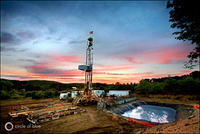
Many point to the large reserves of shale gas as promising U.S. energy independence in the near future. Extracting shale gas, however, requires huge amounts of water, and growing water shortages have already led to conflicts over water use between shale gas developers and farmers. Such conflicts are only going to intensify.
-
-
UAV developer CyPhy Works raises $7 million to build flying robots
Danvers, Massachusetts-based CyPhy Works, a developer of advanced UAVs, the other day announced the close of a $7 million financing round led by Lux Capital, with participation from General Catalyst Partners, Felicis Ventures, and several undisclosed angel investors. As part of the financing, Lux Capital Partner Bilal Zuberi will join the CyPhy Works board of directors. The company says it targets 24/7 “persistent” operations.
-
-
“Hybrid” nuclear plants could make a dent in carbon emissions
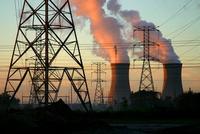
Combining nuclear with artificial geothermal, shale oil, or hydrogen production could help slow climate change, study shows. MIT’s Charles Forsberg proposes marrying a nuclear powerplant with another energy system, which he argues could add up to much more than the sum of its parts.
-
-
Colleges incorporate homeland security into their curriculum
The establishment of the Department of Homeland Security(DHS) in the aftermath of the 9/11 attacks has made “homeland security” a common phrase and a flourishing industry in the United States. Service providers and manufacturers have benefited by introducing devices and offerings to protect, detect, and react to natural and man-made disasters. Colleges and universities have also begun to incorporate homeland security into their curriculum.
-
-
Pyreos, ultra‐low power consumption IR sensor specialist, secures $4 million investment
Edinburgh, Scotland-based Pyreos Limited, a specialist in ultra‐low power consumption infrared sensor technology, the other day announced plans for international expansion after securing a further funding round of $4 million. It is possible to use Pyreos sensor arrays in many applications, among them border security, where they can identify human movement at distances of several kilometers.
-
-
Cool technology from DHS
The U.S. Department of Homeland Security (DHS) employs more than 240,000 people in a variety of areas and activities, from border security and aviation to emergency response and cybersecurity, plus everything in between. Many may not be aware of the fact that DHS has also been busy developing some cool, high-tech, life-saving gear to protect people before, during, and following disasters and emergencies.
-
-
Detecting threats in a crowd
Around a military camp situated close to a built-up area there are always people moving about. Scientists at FOI, the Swedish Defense Research Agency, have created a multi-sensor system designed to be able to detect threats by identifying unusual patterns of movement involving individuals or groups.
-
-
Leading climate scientists urge support for nuclear power

Four of the world’s leading climate scientists have urged environmentalists to support the continuing development of nuclear power as one of the ways to reduce fossil fuel pollution, saying wind and solar energy will not be enough to head off dangerous acceleration of global warming. This is an important point because environmentalists agree that global warming is a threat to ecosystems and humans, but many of the same environmentalists oppose nuclear power, arguing that new forms of renewable energy will be sufficient to meet the world’s need for power within the next few decades.
-
-
Planet’s arable land rapidly degrading

Great civilizations have fallen because they failed to prevent the degradation of the soils on which they were founded. The modern world could suffer the same fate. A new study describes how the productivity of many lands has been dramatically reduced as a result of soil erosion, accumulation of salinity, and nutrient depletion.
-
-
Perspectives on terrorism and responses to it
The Strategic Multi-Layer Assessment office within the Office of the Secretary of Defense has published a new white paper, in Looking Back, Looking Forward: Perspectives on Terrorism and Responses to It Strategic Multi-layer Assessment, which offers discussions of different perspectives of terrorism and approaches to understanding the phenomenon. The papers cover topics ranging from strategic and adaptive considerations of terrorism to analytical considerations.
-
-
Resources on disaster preparedness, resilience
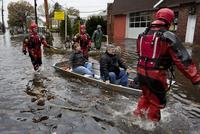
One year after Superstorm Sandy hit the eastern United States, local, state, and federal agencies as well as community groups and businesses are working to strengthen the U.S.s resilience to future disasters. A National Research Council (NRC) has issues a series of studies and reports, and has put together workshops and study groups, which should advance the national conversation on preparedness and resilience.
-
-
Rising temperatures threaten Salt Lake City’s water supply
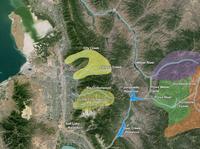
In an example of the challenges water-strapped Western cities will face in a warming world, new research shows that every degree Fahrenheit of warming in the Salt Lake City region could mean a 1.8 to 6.5 percent drop in the annual flow of streams that provide water to the city. By midcentury, warming Western temperatures may mean that some of the creeks and streams that help slake Salt Lake City’s thirst will dry up several weeks earlier in the summer and fall.
-
-
Bill bolsters DHS’s cybersecurity workforce
A House panel recently approved HR 3107, a bill aiming to bolster DHS’s cybersecurity workforce. The House Homeland Security Committeeamended the Homeland Security Cybersecurity Boots-on-the-Ground Actto expand DHS’ outreach to candidates for IT security jobs by creating a tuition-for-work fellowship and a program to recruit military veterans and unemployed IT specialists for DHS employment.
-
-
U.S. policy should encourage foreign Ph.D. students to stay: study
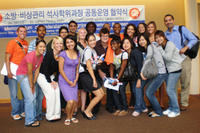
Attracting more talented foreign students to study at U.S. universities and encouraging them to launch entrepreneurial ventures here could help “revitalize innovation and economic growth” in this country, three economists conclude in a new study. The researchers have found that high-performing foreign-born Ph.D. students improve the “creation of knowledge” in U.S. universities. When knowledge is created, it tends to drive entrepreneurial investment and economic growth.
-
-
2012 sees slowdown in the increase in global CO2 emissions
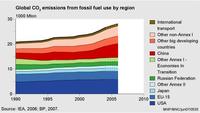
Actual global emissions of carbon dioxide (CO2) reached a new record of 34.5 billion tons in 2012. Yet, the increase in global CO2 emissions in that year slowed down to 1.1 percent, which was less than half the average annual increase of 2.9 percent over the last decade. This is remarkable, as the global economy grew by 3.5 percent. This development signals a shift toward less fossil-fuel-intensive activities, more use of renewable energy, and increased energy saving. Increases in fossil-fuel consumption in 2012 were 2.2 percent for natural gas, 0.9 percent for oil products, and 0.6 percent for coal.
-
More headlines
The long view
A Shining Star in a Contentious Legacy: Could Marty Makary Be the Saving Grace of a Divisive Presidency?
While much of the Trump administration has sparked controversy, the FDA’s consumer-first reforms may be remembered as its brightest legacy. From AI-driven drug reviews to bans on artificial dyes, the FDA’s agenda resonates with the public in ways few Trump-era policies have.
Risk Assessment with Machine Learning
Researchers utilize geological survey data and machine learning algorithms for accurately predicting liquefaction risk in earthquake-prone areas.
Foundation for U.S. Breakthroughs Feels Shakier to Researchers
By Max Larkin
With each dollar of its grants, the National Institutes of Health —the world’s largest funder of biomedical research —generates, on average, $2.56 worth of economic activity across all 50 states. NIH grants also support more than 400,000 U.S. jobs, and have been a central force in establishing the country’s dominance in medical research. Waves of funding cuts and grant terminations under the second Trump administration are a threat to the U.S. status as driver of scientific progress, and to the nation’s economy.
The True Cost of Abandoning Science
By Steven R. Furlanetto
“We now face a choice: to remain at the vanguard of scientific inquiry through sound investment, or to cede our leadership and watch others answer the big questions that have confounded humanity for millennia —and reap the rewards.”
Bookshelf: Smartphones Shape War in Hyperconnected World
By Kathryn Brimblecombe-Fox
The smartphone is helping to shape the conduct and representation of contemporary war. A new book argues that as an operative device, the smartphone is now “being used as a central weapon of war.”
New Approach Detects Adversarial Attacks in Multimodal AI Systems
New vulnerabilities have emerged with the rapid advancement and adoption of multimodal foundational AI models, significantly expanding the potential for cybersecurity attacks. Topological signatures key to revealing attacks, identifying origins of threats.
